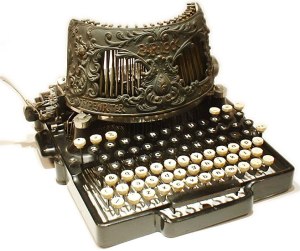I’m reading Alfred McCoy’s Policing America’s Empire: The United States, the Philippines and the Rise of the Surveillance State (Madison: University of Wisconsin Press, 2009). It is an impressive piece of scholarship, the result of decades of reading and researching about the American colonization of the Philippines.
One of McCoy’s arguments in this book is that the US was able to pacify and control the Philippines because it benefited from an information revolution that had been made possible by the invention of the telegraph, the telephone, and the typewriter.
These new technologies enabled the Americans to record, transmit and analyze information faster and on a larger scale than anyone had ever been able to do so before. And this use and control of information was critical in enabling the Americans to gain and maintain control over the Philippine islands.
With this new understanding of the historical importance of the typewriter, today I came across a letter that the American consul-general in Sadakan, British North Borneo, wrote in 1907 to The Rebuilt Typewriter Company of Chicago. A representative of that company had written to the consul-general, Lester Maynard, to inquire about the market for typewriters in British North Borneo, and in this letter the consul-general responded.
In 1907 there were a total of 16 typewriters in Sandakan. Eight could be found in the offices of the British North Borneo Government – perhaps a sign that they were as hard at work collecting information about the area of Borneo under their colonial control as the Americans were in the Philippine islands.
Meanwhile there was one company that had three, and two other companies that had two each. And finally, the US consulate had one typewriter.
These 16 typewriters, in turn, had been produced by six different companies: 5 by Barlock, 3 by Underwood, 3 by Remington, 2 by Blickensdorfer, 1 by Yost and 2 by Adler.
At that time, there was one company in Sandakan that sold typewriters: Adlers for the equivalent of $79 US each. I did a calculation (here) to see what that would be equivalent to today, and the result I got was: $1,877.
That is a lot of money for a typewriter!! The Americans at the time were paying Filipino policemen something like $240 a year – about the same as three typewriters. . .
So while the information revolution brought about by the invention of such technologies as the telephone, the telegraph and the typewriter gave the American colonial government in the Philippines an unprecedented ability to engage in the surveillance of its colonial subjects, that same government also must have spent an unprecedented amount of money in the process.
Perhaps that’s why Filipino policemen were paid so little – the government needed to save money to buy typewriters, as these tools of the information revolution were critical for producing and maintaining the knowledge that was used to control the colony.





